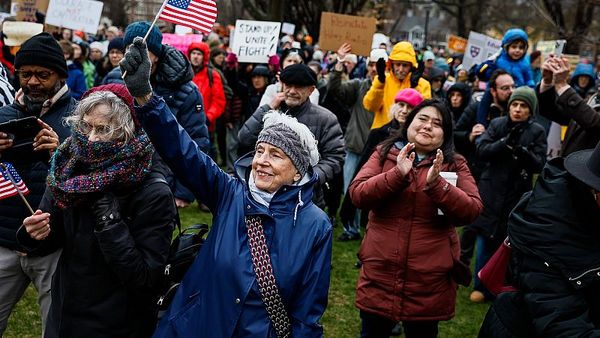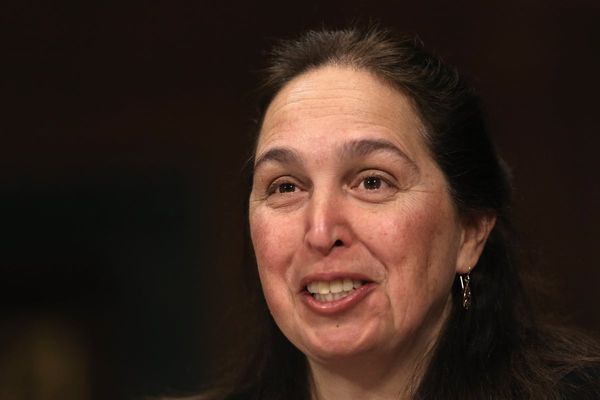The Senate map has long favored Republicans — and one week out from Election Day, that hasn’t changed.
With the GOP almost certain to win West Virginia after the retirement of Sen. Joe Manchin III, Republicans need to flip just one more of the seven competitive seats held by a Democrat or an independent to gain a majority in the chamber.
The top Democratic targets remain Sens. Jon Tester of Montana and Sherrod Brown of Ohio. Both are three-term incumbents whose states have grown more Republican since 2016. And with former President Donald Trump, who won both their states twice, on the ballot, their odds of winning grew significantly longer.
But politics can be unpredictable, and this year is no exception. Republican Ted Cruz is facing a surprisingly close race in Texas against Democratic Rep. Colin Allred. Cruz’s vulnerability has caught the attention of national Democrats, who announced last month that they are putting money into the race to defeat him.
And in deep-red Nebraska, independent Dan Osborn is within striking distance of unseating Republican Deb Fischer. National Republicans initially viewed Osborn as a long shot but now consider him a serious threat.
Our list of the Senate’s most vulnerable members is based on interviews with party and super PAC officials, fundraising data and polling, both public and internal.
Despite some shifting, three key presidential battlegrounds — Pennsylvania, Wisconsin and Nevada — also remain Senate battlegrounds.
Roll Call typically focuses on the 10 most endangered incumbents, but as has been true all cycle, the list kept shrinking. Our first assessment in May 2023 featured independent Kyrsten Sinema of Arizona, Republican Mitt Romney of Utah and Manchin; all have since taken themselves out of contention by announcing their retirements. And just five months ago, we selected New Jersey Democratic Sen. Bob Menendez as the most vulnerable member. But that was before he resigned in August after being convicted on federal corruption charges.
We don’t include open seats, but contests in Arizona, Michigan and Maryland could also shape the partisan balance of the Senate. In Arizona, Republican Kari Lake is running against Democratic Rep. Ruben Gallego. Inside Elections with Nathan L. Gonzales rates that race Lean Democratic.
In Michigan, Democratic Rep. Elissa Slotkin and former GOP Rep. Mike Rogers are vying for a seat being vacated by Sen. Debbie Stabenow. Inside Elections rates that contest Tilt Democratic.
And in deep-blue Maryland, Republicans hope former Gov. Larry Hogan, who has publicly criticized Trump, will win the state’s open Senate seat. He’s facing Prince George’s County Executive Angela Alsobrooks to succeed retiring Democratic Sen. Benjamin L. Cardin. The race is rated Likely Democratic.

The dirt farmer from north-central Montana started the cycle as one of the Senate’s most endangered members, and little has changed as Nov. 5 approaches. An Emerson College Polling/The Hill survey released Sunday found Tester trailing Republican businessman Tim Sheehy, 46 percent to 50 percent, with 3 percent undecided. Tester is the last Democrat holding statewide office in Montana, a state that has grown increasingly hospitable to Republicans in recent years, and he’ll have to significantly outpace the top of the Democratic ticket if he hopes to win a fourth term.

Since his first election to the Senate in 2006, Brown has won by fairly comfortable margins. But with Trump on the ballot and the state’s shift to the right, he’s facing new hurdles in his run for a fourth term. Brown is competing against Republican businessman Bernie Moreno in one of the nation’s hardest-fought and most expensive races. Moreno, who has received a major boost from the cryptocurrency industry, has sought to nationalize the race and tie Brown to Vice President Kamala Harris, the Democratic presidential nominee. But Democrats say if anyone can overcome Ohio’s recent shifts, it’s Brown. His economic populism makes him a tough opponent, even in a state Trump won by 8 percentage points. A Washington Post poll of likely voters released earlier this month found Brown at 48 percent and Moreno at 47 percent, with a 3.5 percent margin of error.

Baldwin has moved up this list as Election Day nears and moves into the No. 3 spot with a week out. Republican nominee Eric Hovde and his allies have been attacking Baldwin for a conflict of interest related to certain financial disclosures she doesn’t have to make related to her partner’s job as a financial adviser. Baldwin’s campaign has emphasized Hovde’s home and work in California and argued he doesn’t represent Wisconsinites.

Casey is locked in a tight race with GOP businessman Dave McCormick in Pennsylvania. His moving back down one spot on the list is more a reflection of how tight the Wisconsin race is as opposed to Pennsylvania’s race getting less competitive. Republicans argue Casey is too closely aligned with the Biden-Harris administration and has changed during his three terms in the Senate. Democrats have targeted McCormick’s ties to Connecticut; his campaign has said he spends time because his daughters live there.

Nevada was home to 2022’s closest Senate race and many observers were bracing for a similarly tight contest this year. Democratic Sen. Jacky Rosen got an early start on GOP opponent Sam Brown, launching ads and attacking him, particularly on abortion rights. The strategy appears to be yielding dividends for the Democrat, with Rosen leading Brown by 4 percentage points in an InsiderAdvantage poll from Oct. 19-20. Rosen has painted Brown as a hard-right Republican who backs a national abortion ban, while Brown, a Purple Heart recipient, has sought to tie Rosen to the Biden administration.

Cruz has defeated well-funded opponents before, but Democrats say this year is different. Cruz’s opponent, Democratic Rep. Colin Allred, a former NFL linebacker and Obama administration official, has criticized Cruz for his opposition to abortion, his vote against certifying the results of the 2020 presidential election and his 2021 trip to Cancun during a brutal Texas ice storm. Cruz, who has Trump’s endorsement, has attacked Allred on transgender rights and immigration policy. A New York Times/Siena College poll released Monday found Cruz leading 50 to 46 percent. Democrats have invested money in the race in an effort to offset the advantage Cruz has with Trump at the top of the ticket.

Can a former union organizer with a populist policy platform defeat a two-term Republican in a ruby-red, largely rural state? That’s the question in Nebraska, where Dan Osborn, who led a 2021 strike at the Kellogg’s cereal plant in Omaha, is on an unlikely quest to unseat Fischer, the Trump-endorsed incumbent. The race is close, according to Monday’s New York Times/Siena College poll, which had Fischer ahead by 2 percentage points with 5 percent undecided. There’s no Democrat in the race. Republicans have sought to portray Osborn as a closet Democrat whose progressive economic views are out of step with the state’s conservative voters. But Osborn has vowed to serve as a true independent, rebuffing a question from a voter about whether he plans to vote for Trump or Harris.

Democrats face an uphill climb to oust Scott, who has won statewide races by slim margins throughout his political career. His contest against former Democratic Rep. Debbie Mucarsel-Powell comes as voters in Florida are considering an abortion referendum and the state recovers from hurricane season. While Democrats see vulnerabilities for Scott, the state has moved to the right. In addition to running for reelection, Scott has already launched a campaign to be the next Senate Republican leader.
The post Late shifts in dynamics, but GOP still holds advantage appeared first on Roll Call.







